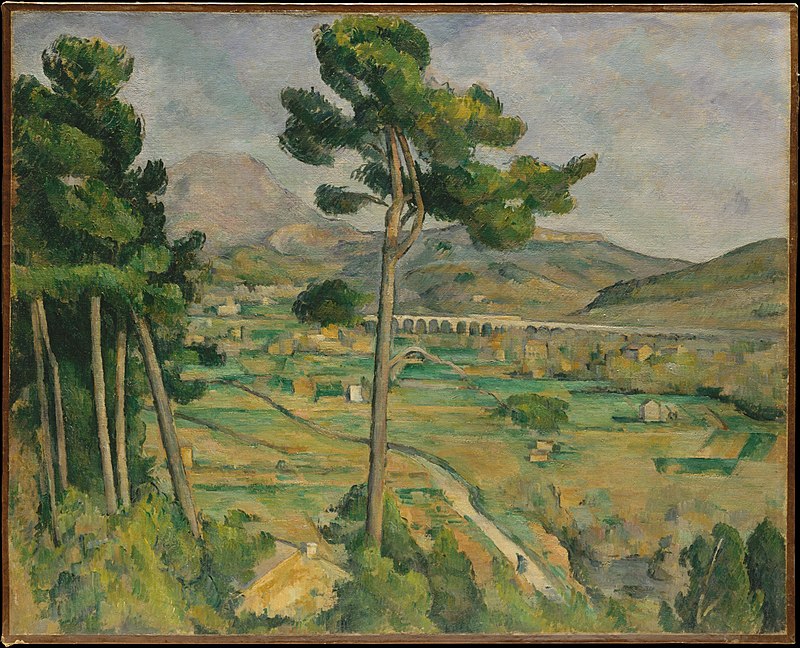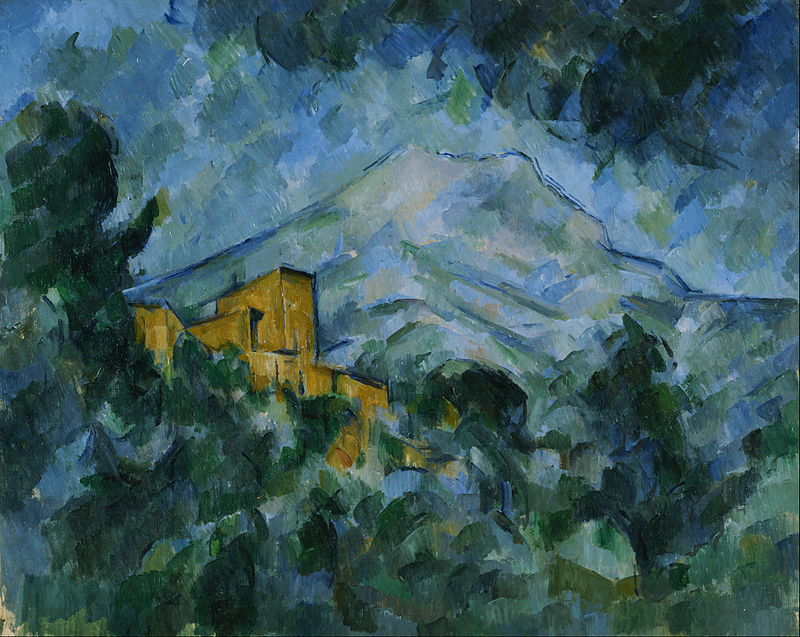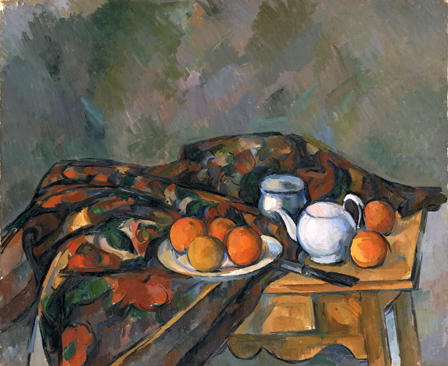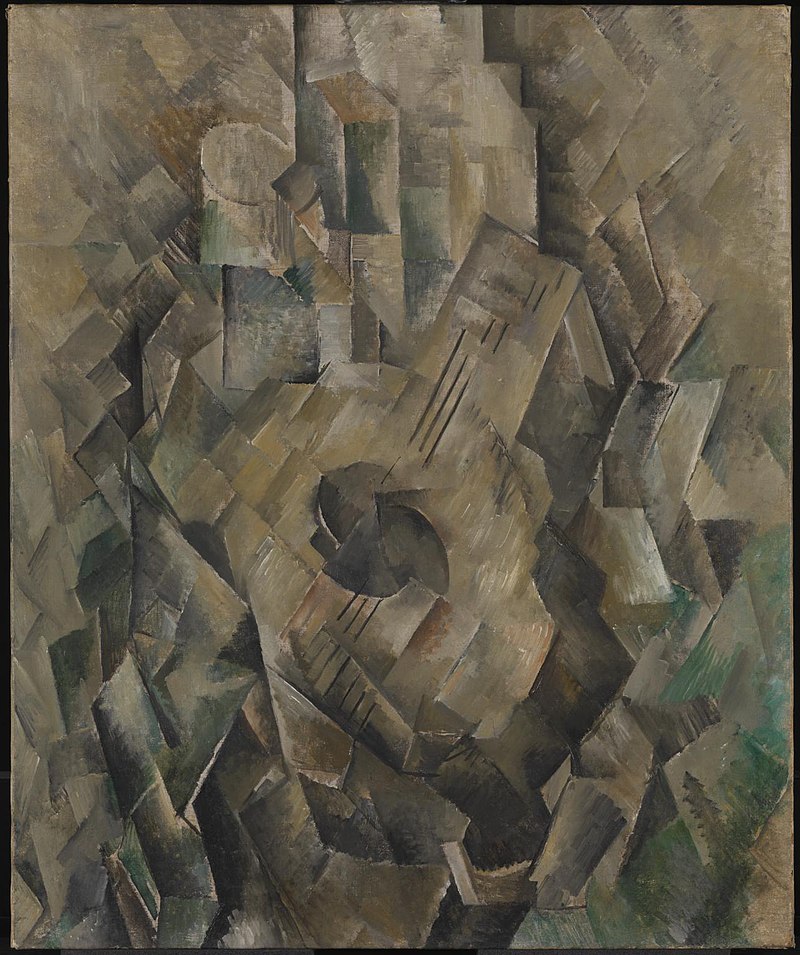
Mont Sainte-Victoire
1882–1885
Metropolitan Museum of Art
(An early version)

Mont Sainte-Victoire and Château Noir
1904–05
Bridgestone Museum of Art, Tokyo, Japan
Paul Cézanne (1839-1906) was a French artist who played a significant role in the development of modern art, particularly in the transition from Impressionism to the emergence of abstract art in the 20th century. Although Cézanne himself did not fully embrace abstraction, his innovative approach to painting and his exploration of form, color, and perspective had a profound influence on subsequent artists, paving the way for the abstract art movement.
Cézanne’s unique style can be described as a bridge between the representational art of the past and the abstract art of the future. He sought to capture the essence of his subjects rather than merely reproducing their outward appearance. He broke away from the traditional rules of perspective and depth, and instead focused on simplifying forms, flattening planes, and emphasizing geometric shapes. This approach laid the foundation for the abstract exploration of form and space in the 20th century

Still Life with a Teapot
1902-05
National Museum Cardiff
One of the key aspects of Cézanne’s work that had a lasting impact on abstract art was his emphasis on the fundamental elements of painting, such as color, shape, and composition. He believed in the significance of the artist’s subjective interpretation and expression, which laid the groundwork for the abstract artists who would follow. Cézanne’s use of color, particularly his exploration of color relationships and his bold, expressive brushwork, greatly influenced the development of abstract expressionism.
Cézanne’s emphasis on the formal qualities of art, rather than strict representation, also influenced abstract artists in their exploration of non-objective art. By focusing on the arrangement of lines, shapes, and colors, Cézanne demonstrated that the essence of a subject could be conveyed through abstracted forms. This notion of reducing objects to their basic elements and exploring the interplay of these elements became central to abstract art movements such as Cubism and Constructivism.

Georges Braque, 1909–10, La guitare (Mandora, La Mandore), oil on canvas, 71.1 x 55.9 cm, Tate Modern, London
Furthermore, Cézanne’s approach to landscapes and still lifes, where he broke down objects into geometric forms and explored multiple perspectives simultaneously, directly influenced the development of Cubism. Artists like Pablo Picasso and Georges Braque drew inspiration from Cézanne’s experimentation with multiple viewpoints and his deconstruction of form, leading to the revolutionary artistic movement of Cubism, which pushed further into abstraction.
In summary, Paul Cézanne’s contributions to the art world were instrumental in paving the way for the emergence of abstract art. His innovative approach to form, color, and perspective challenged traditional artistic conventions and inspired subsequent artists to explore the abstract and non-representational aspects of art. Cézanne’s influence can be seen in the development of movements such as abstract expressionism, Cubism, and Constructivism, as artists sought to push the boundaries of representation and delve into the realm of pure abstraction.
